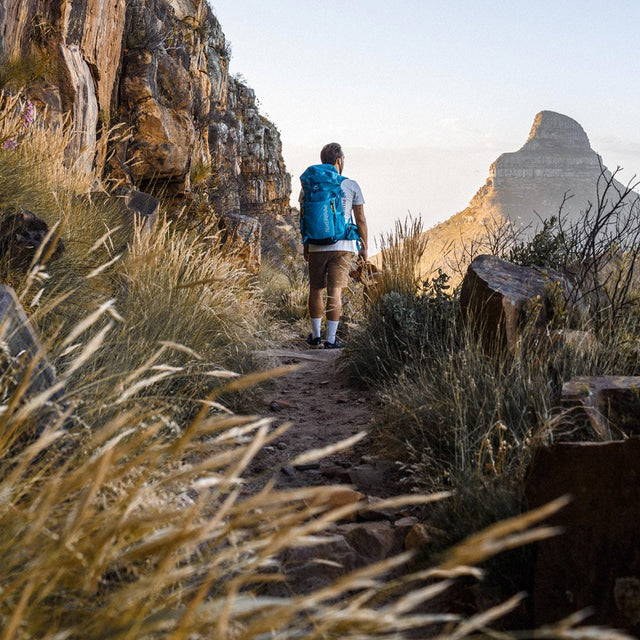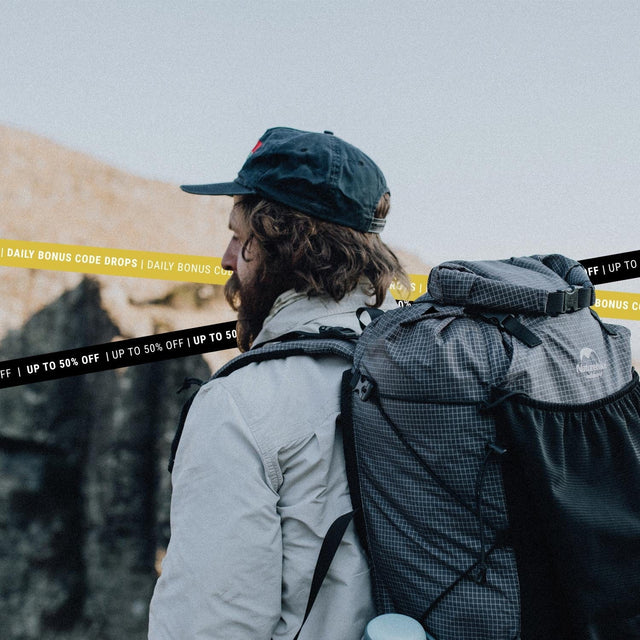What NOT to Bring Hiking: The Gear Mistakes That'll Destroy Your Trail Adventure
We are all guilty of bringing way too much on a hiking trip. After years of making and seeing others' mistakes, we have compiled a guide to show you what not to bring hiking so you can have a memorable trip without back pain. Here's what you should leave at home for your next adventure.
Heavy Hiking Gear That'll Kill Your Hike
Camp Chairs: The chair might only be 2,5kg, but try carrying it for an extended period of time and see how heavy it becomes. Nature has provided the perfect for on, rocks, make use of them.
Cast Iron Cookware: Heavy metal cookware will drain the life out of you. High-quality gear like titanium cookware exists for a reason - it's worth investing in lightweight alternatives.
Too Much Food: People often pack enough for an army or two, but it's totally unnecessary. Calculate enough food based on your trip length and activity level. Pack calorie-dense stuff that won't spoil, especially in hot weather. Your first aid kit is more important than gourmet snacks.
Actually Dangerous Stuff
Cotton Clothing: Cotton clothing can seriously mess up your hike. When cotton gets wet from sweat or rain, it stays wet and stops providing body heat.
Get merino wool or synthetic extra layers. This isn't gear snobbery - it's about staying warm and dry during changing weather conditions.
New Boots on Trail Day: Don't break in new boots during a hike unless you want your feet covered in blisters and hot spots. Test your hiking boots at home before heading out. One pair of well-broken-in boots beats two pairs of untested ones.
Wrong Footwear: Your flip-flops aren't suitable for hiking. Trail conditions change fast - smooth paths become rocky, muddy, or require water crossings. Proper hiking boots provide the support you need for elevation gain and rough terrain.
Electronics That Create Problems
Too Many Gadgets: We get it, electronics revolve around us, and we've grown to need them in our daily lives. But bringing your laptop, tablet, and three cameras misses the point of getting outdoors.
One cell phone for emergencies and navigation works fine. Most smartphone apps handle basic navigation, but if your phone is your only GPS device, you're asking for trouble when cell service disappears.
No Backup Navigation: Carry a paper map; it's old-school, but paper doesn't need batteries and works when your phone dies. Many hikers get lost because they rely only on their phones.
Food and Water Mistakes
-
Glass Containers: Glass jars and bottles don't belong in backpacks. One slip during water crossings and you've got dangerous shards everywhere, plus unnecessary weight. Use lightweight containers for storing food safely.
-
Wrong Water Strategy: Not bringing a water filter when natural sources are available means carrying all your water from the trailhead. For longer trips, a lightweight water filter makes more sense than carrying everything.
-
Scented Products: Strong-smelling soap and toiletries attract animals you don't want to meet. Hand sanitiser and unscented products work better for backcountry hygiene without creating problems.
Overpacking Traps
Multiple Everything: I used to pack backup everything - backup tent, backup sleeping bag, three knives. Most day hiking and weekend trips don't need redundancy. One good multi-tool handles most situations.
Exception: always bring extra clothes, especially extra socks. Wet feet make everything miserable, and socks weigh almost nothing.
Wrong Weather Gear: Check up-to-date info before heading out. Having proper rain gear when you need it matters, but carrying heavy rain jackets in perfect weather conditions just adds weight.
For sun protection in hot weather, lightweight options work better than heavy gear. Match your sleeping bag to expected temperatures, not worst-case scenarios.
What Actually Works
The Ten Essentials: Focus on the ten essentials: navigation, sun protection, extra layers, illumination, first aid kit, fire starter, repair tools (duct tape works great), nutrition, hydration, emergency supplies.
Your first aid supplies should be comprehensive but lightweight. Don't pack for performing surgery in the backcountry.
Smart Gear Choices: Use trekking poles that double as tent poles. Your cell phone works as camera, GPS, and emergency light. Multi-use items save serious weight for uphill hikers.
Choose moisture-wicking fabrics over cotton. Modern materials make a huge difference in comfort and safety.
Quality Over Quantity: It's better to carry one piece of high-quality gear than three cheap, heavy alternatives. This applies to everything from your sleeping bag to your multi-tool.
If you want to know what to actually pack on a hiking gear, check out our hiking gear checklist.
Simple Rules That Work
Before adding anything to your pack, ask:
-
What problem does this solve?
-
How often will I use it?
-
Can existing gear do this job?
-
What happens if I don't bring it?
Usually, nothing terrible happens if you leave questionable items at home.
Weight = Energy: Every gram removed from your pack gives you energy for actually enjoying the hike. Better safety margins if the weather changes. Less chance of gear problems ruining your outdoor adventure.
Start Small: You don't need to become an ultralight hiker overnight. Start by leaving one unnecessary item at home on your next hike. Then another on the trip after that.
You'll figure out what you actually need versus what you think you might need. Or you can make your life easier by using our hiking gear checklist!
Final Thoughts
The goal isn't packing as little as possible - it's packing smart and avoiding hiking mistakes that make trips miserable. What not to bring hiking comes down to thinking through each item's utility versus its weight.
And hey, if you make mistakes along the way - welcome to the club. We've all been there. Just don't drag a camp chair up a mountain. Trust us on that one.
If you're looking for light and premium hiking gear, look no further than Naturehike!



0 Comments
There are no comments for this article. Be the first one to leave a message!